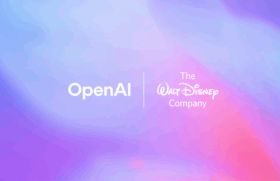By Charlene Weisler
 Research and fraud: As Data Science is increasingly adopted in media companies, research departments, especially in those areas dedicated to quality research such as focus groups, are feeling the pinch. Not only can pure data focus attention and resources on real time reporting, the margin of error in its output can be minimized with protocols such as blockchain. The two seemingly different but actually related topics of quality research and ad fraud were discussed by Paul Donato, CRO, the ARF at SXSW:
Research and fraud: As Data Science is increasingly adopted in media companies, research departments, especially in those areas dedicated to quality research such as focus groups, are feeling the pinch. Not only can pure data focus attention and resources on real time reporting, the margin of error in its output can be minimized with protocols such as blockchain. The two seemingly different but actually related topics of quality research and ad fraud were discussed by Paul Donato, CRO, the ARF at SXSW:
Charlene Weisler: Is there room for quality research in this age of data driven decisions?
Paul Donato: Quality and quantitative research lie on two different dimensions. Qualitative and quantitative are two ends of a single dimension, and both are changing dramatically.
The quality of the research is essential for both qualitative and quantitative. Social listening is electronic, real time, continuous and benefits from very large samples. Sentiment algorithms have improved dramatically. Open source APIs for natural language and sentiment and the abundance of data on the social networks have changed qualitative in a way believed to have impacted the last presidential election.
Quantitative data is now drawn from online behaviors, loyalty cards and other sources of consumer and media data. However, for many applications, panels and surveys are still needed for modeling holes in the data and demographics of the digital signals. Because, digital data often lacks the depth of what we can collect in surveys, the quality of the models that fill in that data is essential. There is so much data available, with so little measure of accuracy. Therefore, methods of assessing quality are more important than ever.
Weisler: Will fraud ever go away and if not, can we tamp it down?
Donato: Possibly. There are many who are testing blockchain as an immutable ledger of the digital supply chain that can eliminate most of the fraud. Maybe, the major digital companies are working on a device and person’s identity with the possibility of a universal ID after there are no cookies. However, this is looking out 3 to 5 years.
Today, many things are happening to tamp down fraud. Digital is here to stay, so advertisers are taking control of their digital campaigns. Consortiums such as TAG required registrations that support safe and valid traffic. Standards such as those set by the MRC have supported independent firms that specialize in identifying invalid traffic. Viewability standards will help tamp down fraud. Advertising will find a way, so it is a matter of time before fraud is less important than most other challenges in marketing.







